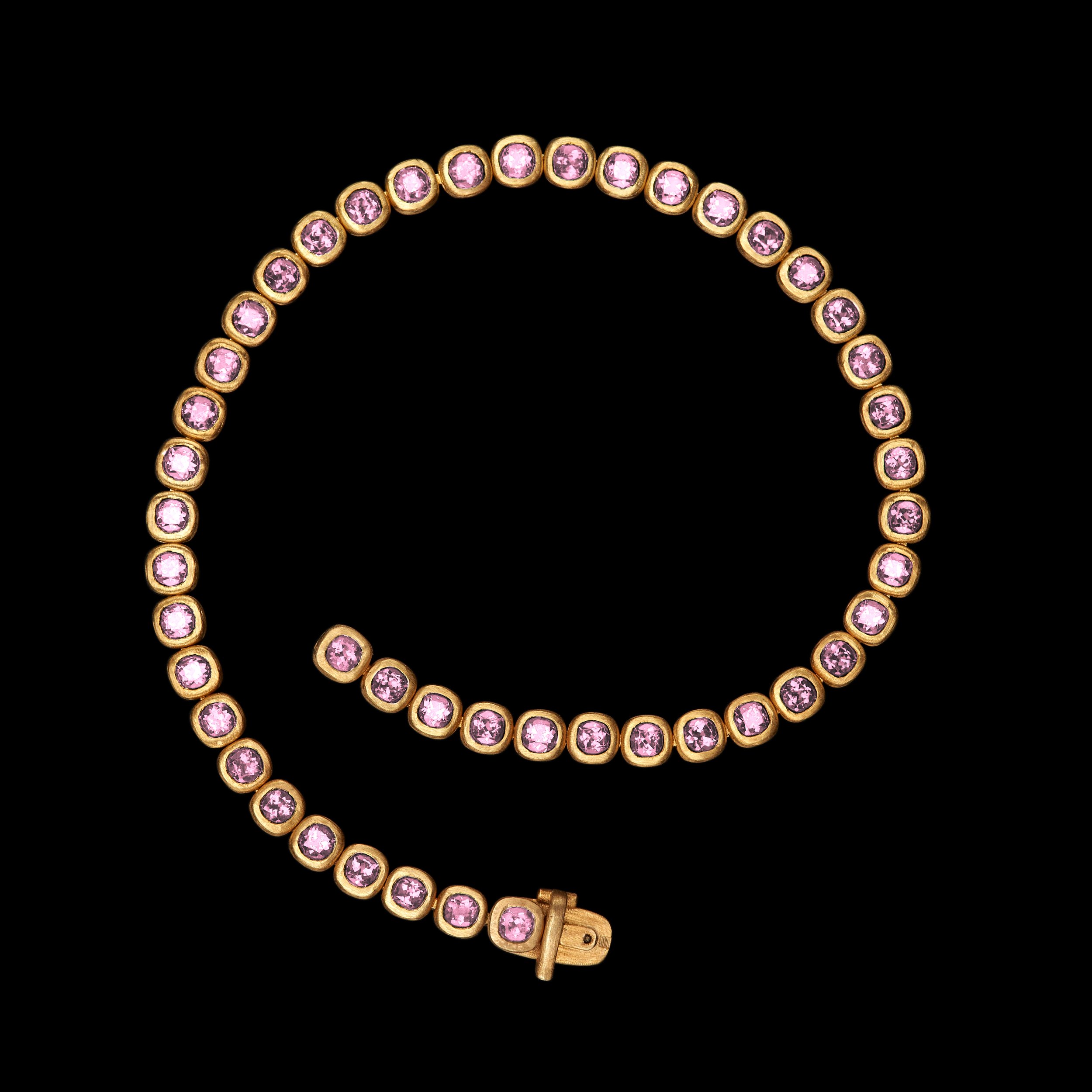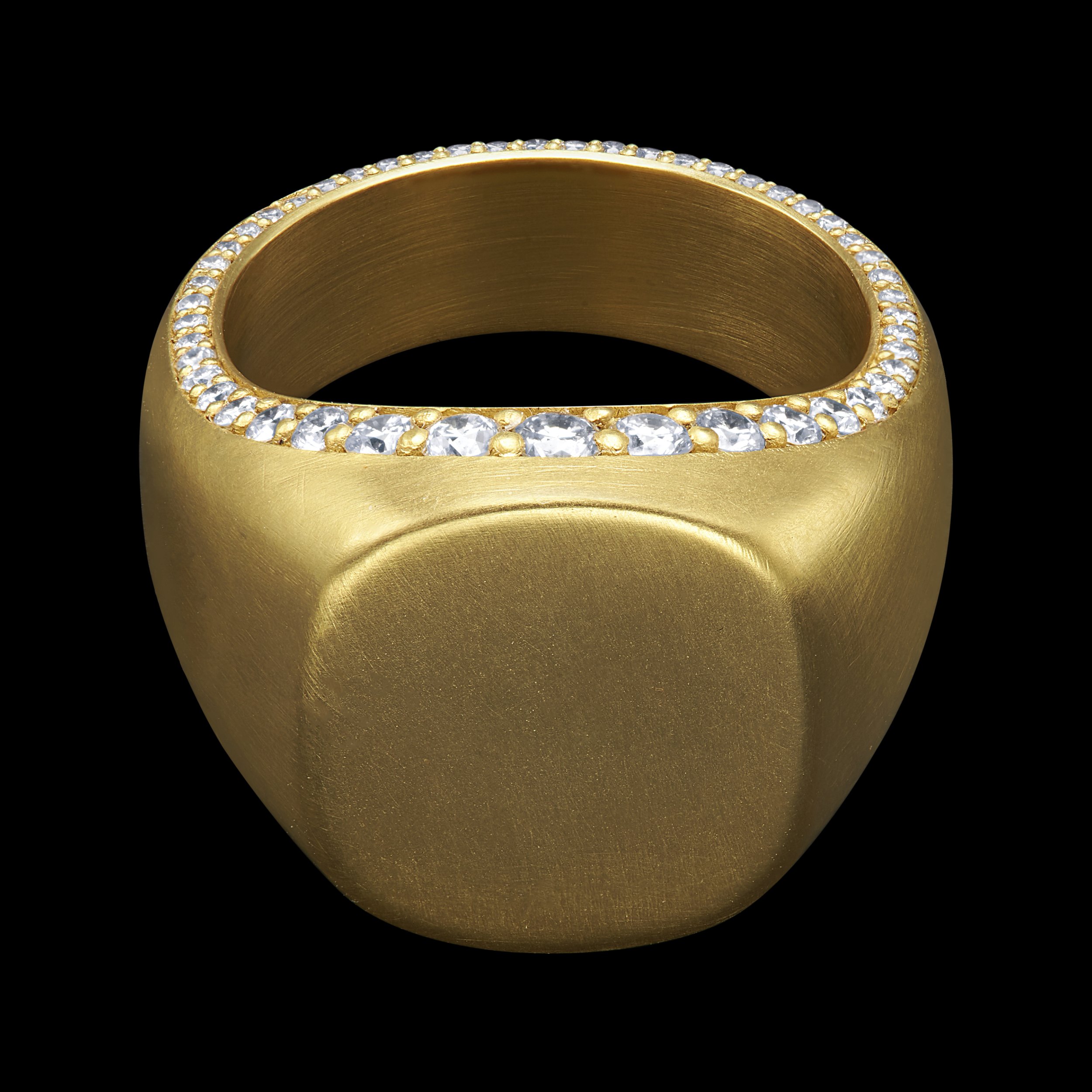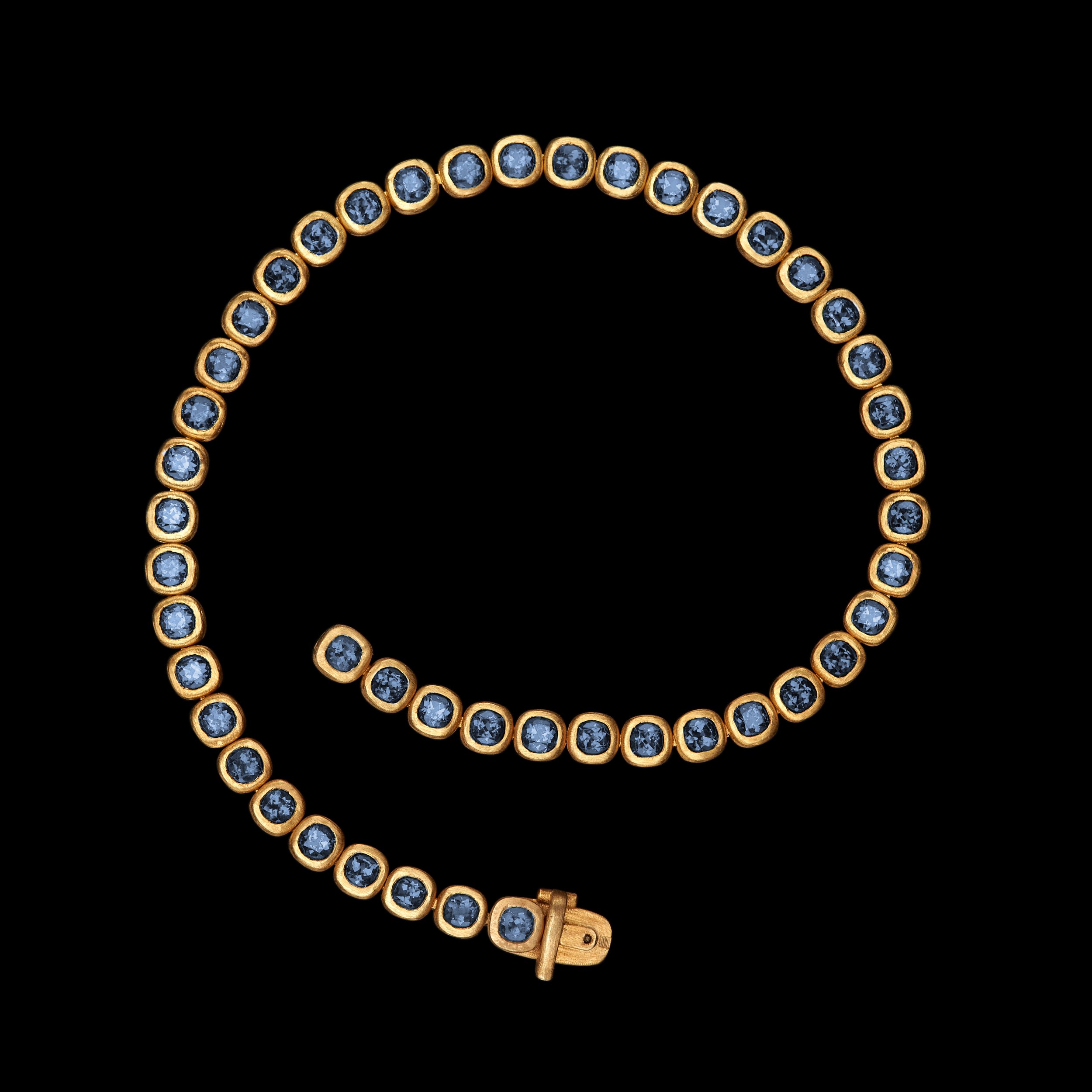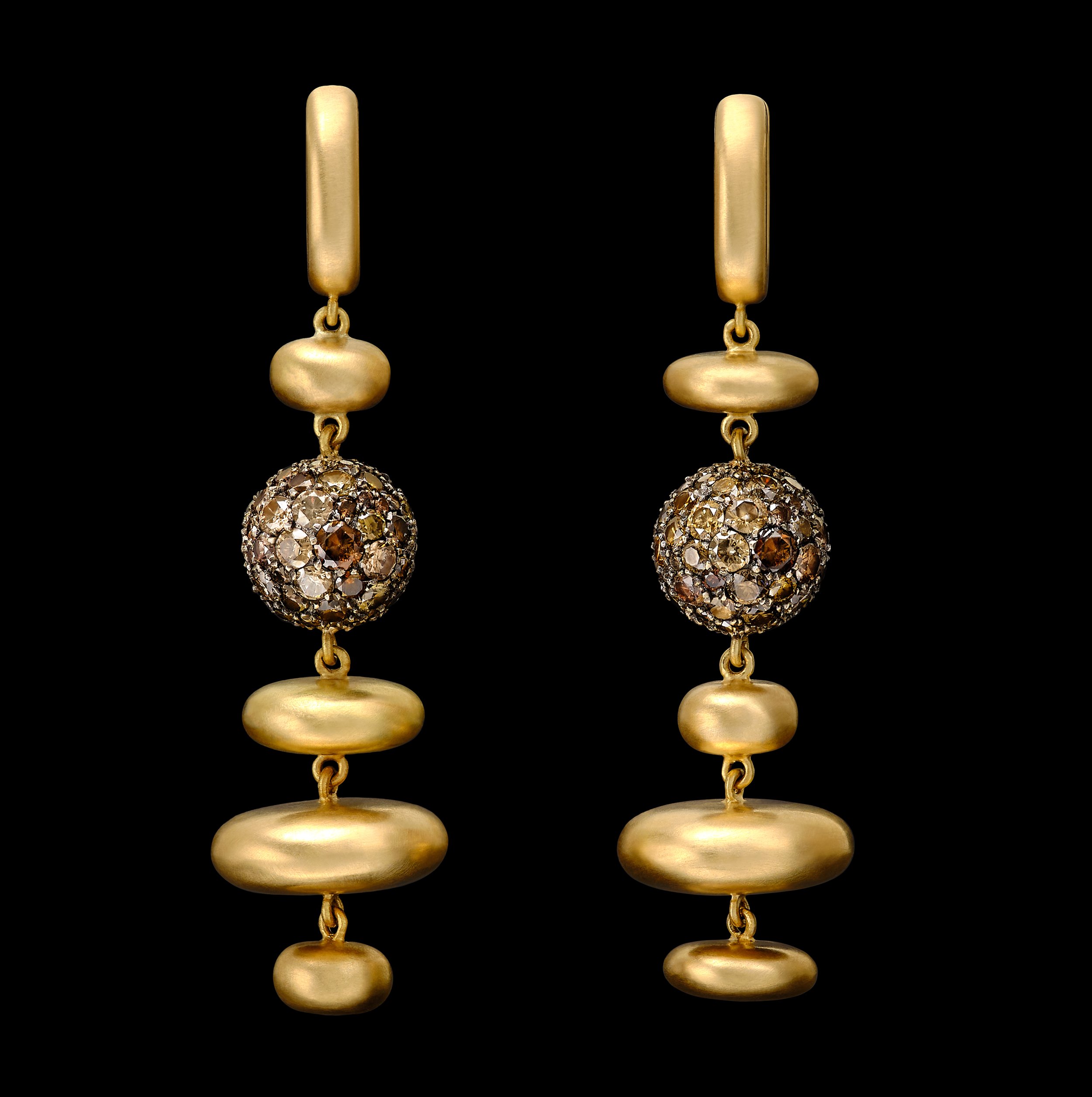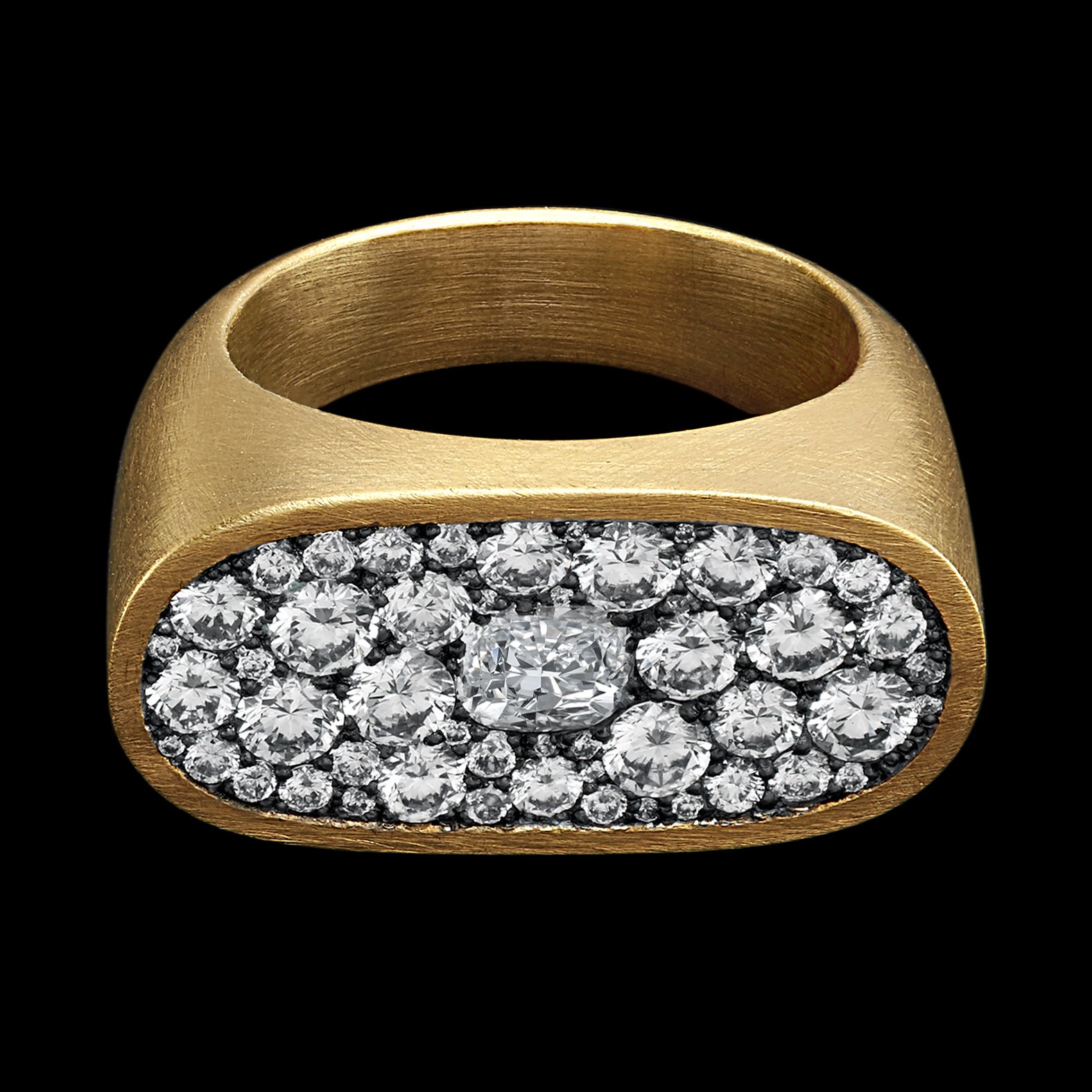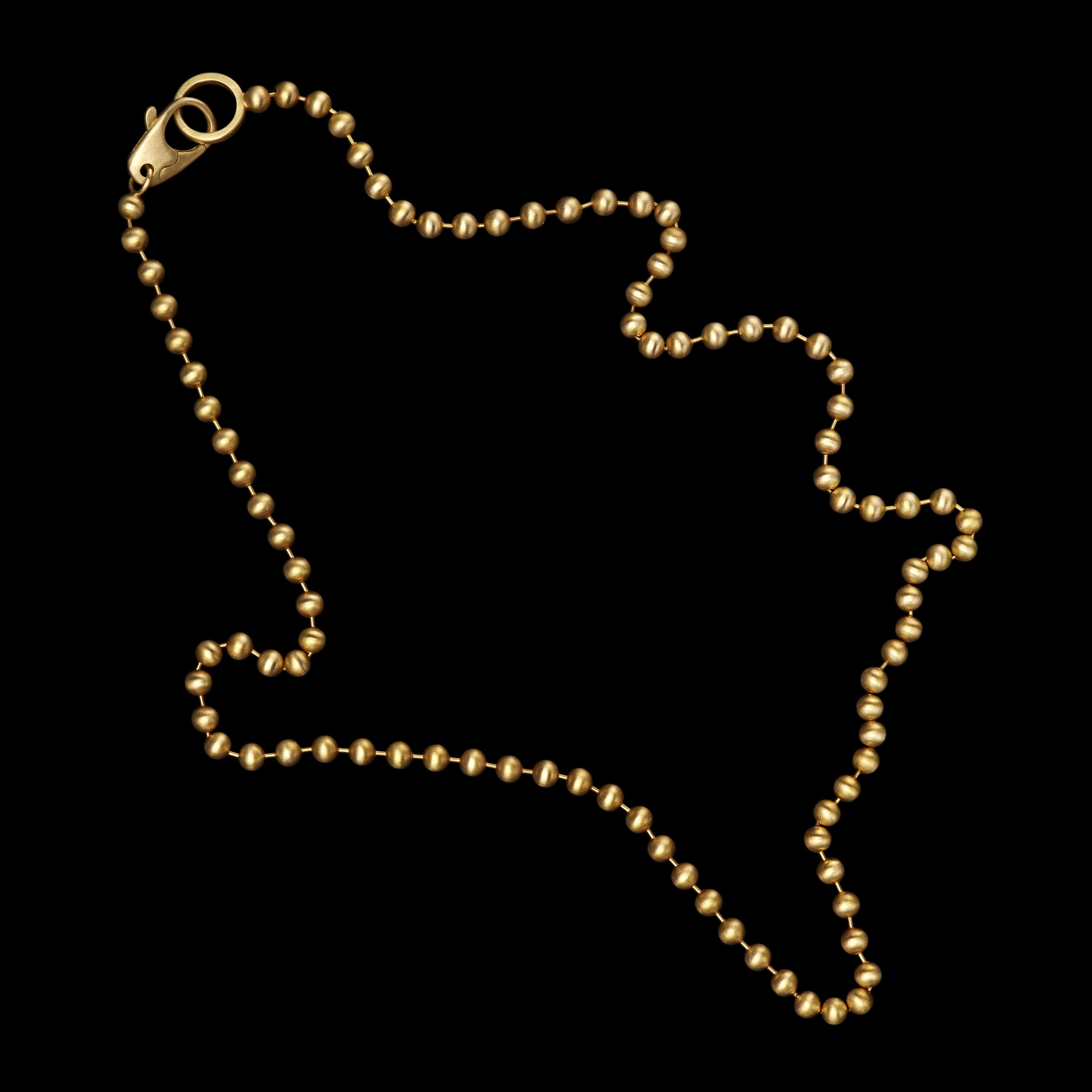Shola Branson is not a goldsmith
For Goldsmiths’ Stories, writer Sarah Royce-Greensill talks with British-Nigerian designer-maker Shola Branson about having an outsider's perspective, making things properly, and manifesting your own destiny.
Portrait of Shola Branson ©Emma Brown Photography
Designer-maker Shola Branson doesn’t describe himself as a goldsmith – despite the fact that he handcrafts every one of the fifty or so pieces he makes every year. “The reason I make it myself is because other people don't do it properly,” says the 32-year-old London-based creative, only half-jokingly. “Ultimately nobody cares as much as you do about the quality and finish.” We meet at Dover Street Market, which has stocked his jewellery since 2023 - a goal that Branson says he’d been manifesting since he established his eponymous brand five years ago.
British-Nigerian Branson says he grew up with “an outsider’s perspective,” as the only black child on a suburban council estate in Woking. His mother, who now creates ceramics, was a conceptual artist working with sound and light installations: an upbringing that paved the way for Branson’s future creative endeavours, but that meant he stood out from his peers.
Unsurprisingly, he “wanted to get out as soon as possible,” he says, and moved to London at 18 to enrol on an Art Foundation course at Central Saint Martins. He didn’t complete the degree, but he amassed a network of entrepreneurial, creative types, and spent his early twenties “floating around” in various fashion-related jobs, including running a content creation consultancy, opening a short-lived boutique in Surrey and styling for sportswear and streetwear brands.
In 2016, his creative curiosity led him to a lost-wax carving workshop at London Jewellery School in Hatton Garden, where he first carved wax to cast into a ring. “I’m into making stuff with my hands and it was quite sculptural, so it felt familiar,” he says. “I just thought, that looks cool, I’ll give it a go. I really enjoyed it so from there I was like, OK, I need to learn the skills to actually make the stuff that I want to do.”
He set up a workbench in his bedroom in Lewisham and spent the next five years teaching himself various goldsmithing techniques in his spare time, via online tutorials and YouTube videos. By 2018, he’d started selling pieces crafted in silver. His early creations were “a little bit melty and kind of weathered,” drawing on organic shapes and the human form – in contrast to the symmetrical, refined silhouettes for which he is now known.
His eye and his designs developed, he says, during a “baptism of fire” in 2019, when he spent six months working at the bench for an antique jewellery dealer in Hatton Garden. There, he encountered jewellery from every epoch, familiarising himself with all the “classic, amazing jewellers” that he hadn’t previously known, having eschewed a traditional design education. “Once I started educating myself about things that had gone before, my work became more informed and developed.”
In late 2019, he began working more with 18kt gold, diamonds and precious gemstones, developing the design aesthetic for which he is now known: a minimalistic juxtaposition between antiquity and modernity, between masculinity and femininity, and between casualness and glamour, where the brilliance of diamonds and gemstones is tempered by pared-back silhouettes and the subtle sheen of satiny brushed gold. He designs for the wearer rather than the observer: chunky signet rings reveal flashes of pavé-set white diamonds from each side of the shank; cartouche-shaped rings see randomly sized pavé diamonds dazzle from a bed of blackened gold; contemporary tennis bracelets and necklaces envelop richly coloured sapphires in cushiony clouds of honey-hued matte metal.
“I love to explore the relationship between the brightness and the colour of the stones with the satin-finish gold which tones it down a bit,” he says. “I like the idea that the signet ring looks inconspicuous and understated until you move your finger and kind of give it a little flash.”
Although he mostly designs with women in mind, the androgynous nature of Branson’s pieces means 35 percent of his customers are male: a clientele built through social media, word-of-mouth and stockists such as Browns and Dover Street Market. “It’s completely unisex; some people say it has a masculine feel, but others interpret it as more feminine. I just try to create things that I like, and I want to see people wear.”
Behind his clean, crisp, contemporary designs lies a deep fascination with ancient history and the cyclical nature of technology and time itself. The concept of an “ancient future” is an overarching theme. “I’ve done a lot of reading around the idea that there may have been technologically advanced civilisations in previous epochs and that progress isn’t necessarily a linear, upwards trajectory,” he says. “I really geek out about that kind of stuff. It definitely has an influence on my work.” He envisages his designs “in a museum cabinet as an artefact from a previous era, but you couldn’t peg it to a specific period of time.”
Branson’s craftsmanship is every bit as fastidious as his inspirations are profound. Working alongside a Hatton-Garden based setter, he is exacting about the scale, proportions and weight of each piece, the colour of every pavé stone, and the precise hue of the alloy. Sometimes he’ll plate over the top of 18kt gold to achieve the specific shade he has in mind. He’ll also leave freshly cast metal to “marinate” for a couple of months: “it builds up a tiny bit of natural patina that gets it to the perfect colour”.
Once sufficiently marinated, the gold is satin-brushed using one of several grades of polishing heads to achieve his desired coarseness, and crafted into pleasingly weighty pieces that retain as much gold as possible. Ring backs are mostly solid, and earrings, such as the trade bead design inspired by early West African currency, have a tactile solidity.
His blackened-gold and coloured-stone Melange pinkie rings caught the eye of jewellery editor and curator Melanie Grant, now Executive Director of the Responsible Jewellery Council, who selected Branson as part of the Brilliant and Black selling exhibition at Sotheby’s New York in September 2021. He says that Grant has been one of his biggest mentors in the industry. In turn, Grant describes him as “a modernist with minimalist tendencies,” adding that “his style is evolving with a maturity that belies his young years.” She invited him to join the exhibition because “his ‘Future Artefacts’ are exactly that: vessels of thought and culture that represent a forward-looking black dynamic that is intelligent and world-class. He has the potential to change design.”
The exhibition was conceived during the increased visibility of the Black Lives Matter movement following the murder of George Floyd in May 2020. It marked a turning point for Branson, who alongside other black jewellers, garnered a wave of press attention. Although he says that today he prefers to “let the work speak for itself rather than categorising it as black jewellery or whatever”, the exhibition certainly helped to raise his profile at a pivotal moment in his career, just as he evolved from working in 9kt and 14kt gold and semi-precious stones to 18kt gold, diamonds and sapphires. “It was kind of all happening at the same time,” he says. “I started to really understand my own design language and where I wanted to go. So, it’s difficult to say how much of that was impacted by people being particularly interested in black jewellery, and how much was me finding my feet and doing my own thing.”
Finding his feet meant establishing a network of gemstone dealers and collaborating with his setter; gradually working his way into the heart of the sometimes-secretive jewellery industry. “Because I didn’t have any background in jewellery, it took me a while to navigate my way. I didn’t know anyone; I didn’t know what I was doing. I didn’t even know anything about jewellery,” he laughs.
At the beginning of 2024, Branson began a residency at the Sarabande Foundation, working alongside 13 other artists-in-residence at the HQ in Haggerston. His aim is to build an atelier of goldsmiths “working at the highest level” to increase production, freeing himself to concentrate on design. Eventually, he’d like every piece to be one-of-a-kind - “I like the idea of everything being special and unique”. He also aspires to expand into other mediums such as sculpture, furniture or pottery. “My dream would be that everything in my house is designed from my perspective. I’d like my jewellery to be exhibited on things that I’ve designed, in a space that is all cohesive.”
For now, though, he’s concentrating on jewellery, and steadily growing his collector base. His brand is self-funded, and he works alone. “I’m the designer, the maker, the PR, the HR…,” he says, making his success thus far even more impressive - although his outsider complex remains. “I’m beginning to realise that a lot of people in the jewellery industry already have money, and they invest a lot into the marketing aspect of their brand, whereas I’ve been bootstrapping it. I’ve always put all the money back into the product. It can be tricky at times, but my focus has always been on creating good products and hoping that it will speak for itself.”
Written by Sarah Royce-Greenshill | Images used with kind permission of Shola Branson


